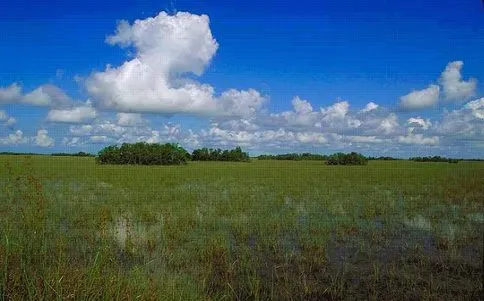During the recent hearing to move the Urban Development Boundary for the South Dade Logistics and Technology District (SDLTD), the popular Environmental Endangered Lands (EEL) program took center stage. The applicant, responding to a request by Commissioner Raquel Regalado for this project to do more for the environment, proposed a voluntary purchase and donation of 622 acres of sensitive lands on the EEL priority “A” list, a list of land determined by the County as being the most important to preserve and protect. In addition to donating EEL land, the applicant agreed to set up a funding mechanism that will generate millions of dollars for the long-term maintenance of these lands. Many of the opposition speakers described this as inappropriate “deal making” and even stated that the wetlands weren’t worth much due to limited development potential. Unfortunately, this argument seemed to be heavily based on the emotional politics of moving the Urban Development Boundary.
As a former Miami-Dade County land manager, I was partially responsible for restoring and maintaining those exact EEL lands. The environmental benefits of owning these lands are real. Ownership and management money allows for prescribed burning, removing exotics and improving hydrology, which benefits all of the adjacent EEL lands and the overall environment. There is no question about that.
According to the SDLTD application, the developers will be required to clean-up their property before they build on it, which will address arsenic contamination that is three times above acceptable levels on some portions of the property. They will also have to install a proper drainage system to limit runoff of sediment and nutrients to the nearby canals that empty into Biscayne Bay. The donation of EEL lands is in addition to these improvements.
In terms of “making a deal” to donate the EEL land, which some speakers criticized, let’s not forget the County has been “making deals” to benefit our environment for decades. As the Natural Resource Division Director of the County Environmental Department (DERM) for over 5 years, I helped administer the County Wetland Trust Fund, the Tree Trust Fund and participated in regional programs such as the Special Area Management Plan. These programs were all set up to collect money from the development of lower quality wetlands, so the County could add to, and improve, large conservation tracts in order to protect our natural resources. The EEL program has received millions of dollars over the years from these mitigation sources. The concept is not new. The only difference in this case is that this development is not offsetting a loss of valuable wetlands or forest land. The donation is truly over and above anything required.
The 622 acres that will be donated equate to almost a full square mile of land that will support wading birds, fish, panthers, otters and hundreds of other native plants and animals without the fear of development. The fact that the land is being donated to the County EEL program means it will be preserved forever. The lands will hold hundreds of acre-feet of fresh water and allow sheet flow to the downstream estuaries, supporting seagrass, manatees, and fisheries. These 622 acres will not have owners who complain if the water levels are raised, or if beneficial fire management is conducted. In addition, the County can use the funds that might have otherwise gone towards buying and managing these lands, and instead protect what’s left of the globally imperiled Dade County pine rocklands, which are also on the EEL acquisition lists. This is an undeniable benefit to conservation in Miami-Dade County.
Every development application must follow the rules and be approved by the County Commission. Commissioners ultimately have the difficult job of balancing between the need for economic growth and making sure our natural resources are protected. If the precedent set by this project and this Commission vote is to donate 2 acres of EEL land for every 1 acre of developable land that comes into the Urban Development Boundary, that is a great precedent for our environment and should be applauded.

